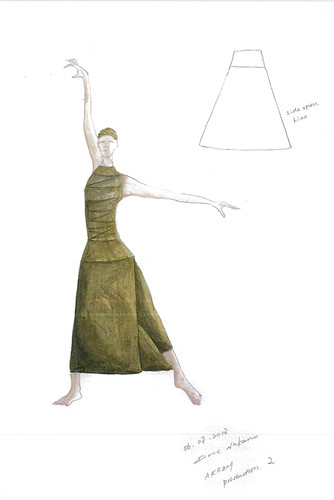
Creating Dust: interview with designer Kimie Nakano

Akram Khan’s Dust will be available to watch for free from Wednesday 29 April 2020 at 7pm BST on Facebook and YouTube, for 48 hours.

In those early beginning stages did both you and Akram have similar ideas?
Both Akram and I had the same feelings and interests in two key factors of the war, the women in the factories and their men, the soldiers in the trenches. In fact both of us had selected the same photographs when we did some research, so in theory we were both at the same starting point.
How did you come up with ideas for the costumes?
Most of my inspiration came from looking through old photographs featuring the factory women making the weapons and the soldiers walking in the trenches. I was very interested in WW1 period costumes, like Coco Chanel, who changed the history of costume.
I think the women during the war effort must have been extremely strong, both physically and psychologically, but still maintained their feminine side after the working day was finally over. I found this fascinating how they could alter their personal appearance so much from their factory uniforms into going-out wear by changing into a skirt.

Tell us more about your research…
I did lots of research for WWI references across film, books, documentaries and historical museum archives, as well as the internet. I particularly focused on clothes before and after this period. The fabrics used were mainly cotton based mixed with linen, silk and real bandages.
From the referenced photographs I chose the aprons, trousers and scarves. The muddy colours were used to replicate an army feel. My original idea was that the stage floor would match exactly the colour of the ladies’ bottom skirt and men’s trousers.
Is designing for dance more challenging that other forms of theatre?
Costumes for dance are always challenging, especially when experimenting with new fabrics but you learn from each production.

How do you feel once you first see your designs on stage?
I feel happy! When I see the costumes during the rehearsals it’s very exciting seeing a sketch finally blossom into reality. The dancers appear to become alive. It is also very important to make sure the dancers feel comfortable in their costumes and are not restricted by their movements.